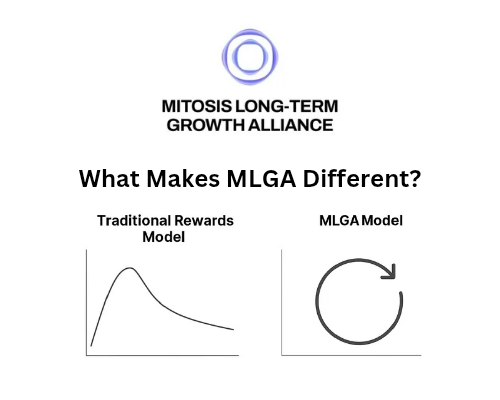Fogo vs Other Chains

As the blockchain ecosystem continues to grow, developers and institutions are faced with an increasingly complex question:
Which Layer 1/2 chain can handle real-time, high-performance, and decentralized workloads without compromise?
Fogo Chain enters this space with a compelling answer. Offering unmatched speed, ultra-low latency, and hybrid virtual machine support. But how does it truly compare to other prominent Layer 1 and Layer 2 chains?
Let’s break it down.
Fogo at a Glance
- Execution Engine: Solana Virtual Machine (SVM) + native EVM
- Block Time: ~40ms
- Throughput: ~48,000 real-world TPS
- Validator Client: Firedancer (default)
- Consensus: Optimized Delegated Proof-of-Stake
- Interoperability: Native cross-chain support
- Ideal Use Cases: Real-time DeFi, Web3 gaming, AI inference, FX/TradFi settlement

Fogo vs Solana
Solana is known for its high throughput and parallel transaction execution through the Sealevel engine. It popularized the Solana Virtual Machine (SVM), enabling DeFi and NFT applications to scale more efficiently than Ethereum. However, Solana suffers from network congestion and validator client diversity bottlenecks.
| Feature | Fogo Chain | Solana |
|---|---|---|
| VM Support | SVM + EVM | SVM only |
| Block Time | 40 ms | ~400 ms |
| Validator Client | Firedancer (native) | Firedancer (in testing) |
| Real-World TPS | ~48,000 | ~4,000–5,000 |
| EVM Compatibility | Native | Requires wrapper (Neon) |
| Latency Optimization | Multi-local consensus | Global consensus |
Verdict: Fogo evolves the Solana architecture with native EVM support, real-time latency, and optimized validator software baked in from the start.
Fogo vs Ethereum
Ethereum is the most decentralized and widely adopted smart contract platform. However, it trades speed for security, resulting in long finality times and high gas fees. It processes only ~15 TPS at the base layer and is heavily reliant on Layer 2 scaling solutions.
| Feature | Fogo Chain | Ethereum |
|---|---|---|
| VM Support | SVM + EVM | EVM only |
| Block Time | 40 ms | ~12 sec |
| TPS | ~48,000 | ~15 |
| Finality Time | Sub-second | ~15 minutes (post-merge) |
| Gas Fees | Low | High |
Verdict: Ethereum prioritizes decentralization and security, but is unsuitable for real-time or latency-sensitive apps. Fogo fills that performance gap.
Fogo vs Avalanche
Avalanche is a fast L1 that uses Snowman consensus and supports custom subnets. It provides decent throughput and low finality times, with a strong DeFi and gaming ecosystem. However, managing subnets adds operational complexity.
| Feature | Fogo Chain | Avalanche |
|---|---|---|
| VM Support | SVM + EVM | EVM only |
| Block Time | 40 ms | ~450 ms |
| TPS | ~48,000 | ~4,500 |
| Subnet Architecture | Not needed | Yes (adds complexity) |
| Consensus | Optimized DPoS | Snowman consensus |
Verdict: Avalanche offers strong throughput and subnet customization, but Fogo’s latency, simplicity, and VM flexibility give it a clear edge for real-time systems.
Fogo vs Aptos / Sui
Aptos and Sui are Move-based chains focused on parallel execution and horizontal scalability. They're promising innovations with unique VMs and consensus mechanisms. However, they use the new Move programming language, which has a steep learning curve and smaller developer community.
| Feature | Fogo Chain | Aptos / Sui |
|---|---|---|
| VM Support | SVM + EVM | Move VM |
| Language | Rust, Solidity | Move |
| Block Time | 40 ms | ~1 sec |
| TPS | ~48,000 | ~5,000 |
| Developer Familiarity | High | Low (new language) |
Verdict: Aptos and Sui offer innovative consensus and VM design, but Fogo’s dev-friendly environment and performance make it more practical today.
Fogo vs Arbitrum / Optimism (L2s)
Arbitrum and Optimism are leading Ethereum Layer 2 rollups designed to scale Ethereum by executing off-chain and posting data back to the L1. While they reduce fees and increase throughput, they rely on Ethereum for security and finality, adding delay and complexity.
| Feature | Fogo Chain | Arbitrum / Optimism |
|---|---|---|
| Layer Type | L1 | L2 |
| TPS | ~48,000 | ~2,000 |
| Latency | Real-time (~40ms) | Variable (2–10 sec) |
| Security Dependency | Self-sovereign | Ethereum rollup |
| Finality | Sub-second | Minutes (due to Ethereum) |
Verdict: Rollups offer Ethereum compatibility but depend on L1 security and face latency bottlenecks. Fogo is faster, sovereign, and real-time.
FOGO WINS EVERYTIME!

CONCLUSION
Each blockchain has strengths tailored to its origin and user base:
- Ethereum offers battle-tested decentralization.
- Solana is great for speed but struggles with client and performance stability.
- Avalanche offers customizability but can become complex.
- Aptos/Sui innovate with new language models but lack mature ecosystems.
- Rollups extend Ethereum but are bound by its latency.
Fogo sets itself apart as the only L1 offering native EVM + SVM support, sub-50ms latency, and ultra-high throughput at scale.

If you're building real-time finance, AI, or gaming on-chain, Fogo isn't just a faster option, It's the only one built for it.
Don't settle for slow. Build on Fogo.

Comments ()